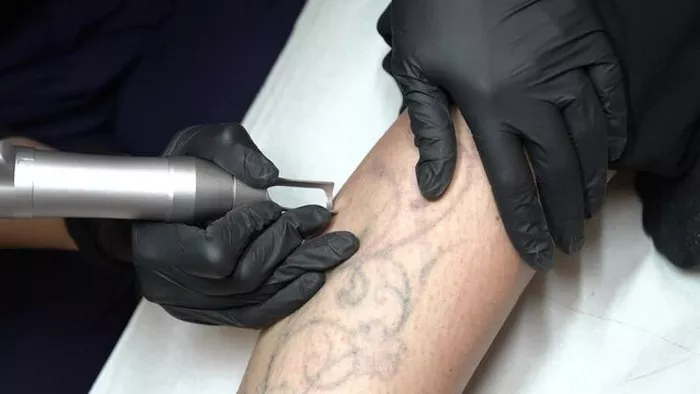Laser tattoo removal is a widely sought-after solution for individuals who wish to erase or significantly fade unwanted tattoos. This guide provides an in-depth look at the costs associated with laser tattoo removal, including factors influencing the price, payment options, the removal process, and potential risks and side effects.
Average Cost of Laser Tattoo Removal
The cost of laser tattoo removal varies significantly based on several factors. On average, individuals can expect to pay between $200 and $500 per session. The total cost for complete removal typically ranges from $1,425 to $3,500. The wide range in pricing reflects variations in tattoo size, complexity, and other influencing factors.
For smaller tattoos or those that are less complex, the lower end of this range may apply. Conversely, larger or more intricate tattoos may require a higher number of sessions and thus result in higher total costs.
Factors Affecting the Cost of Laser Tattoo Removal
Several factors play a crucial role in determining the overall cost of laser tattoo removal:
1. Tattoo Size and Complexity
The size, colors, and complexity of a tattoo are primary determinants of the cost. Larger tattoos generally require more sessions to achieve complete removal compared to smaller ones. Similarly, tattoos with multiple colors or intricate designs may be more challenging to remove, increasing the number of required sessions and, consequently, the total cost.
2. Number of Sessions Required
The number of sessions needed varies depending on the tattoo’s characteristics and the individual’s skin type. On average, it takes between 3 and 12 sessions for complete removal. However, some tattoos may require more sessions, especially if they are particularly large or dense in color. For those seeking to fade a tattoo for a cover-up, fewer sessions may be required compared to full removal.
3. Provider’s Expertise
The experience and qualifications of the provider can significantly impact the cost. Highly skilled and experienced practitioners may charge more for their services. This is often due to their advanced knowledge, specialized techniques, and ability to achieve better results with fewer sessions. Choosing a reputable provider can ensure high-quality treatment but may come with a higher price tag.
4. Geographic Location
The cost of laser tattoo removal can vary based on the geographic location of the clinic. In areas with a higher cost of living or more expensive overheads, such as major metropolitan areas, prices may be higher compared to smaller towns or regions with lower living costs. It is important to consider this when budgeting for tattoo removal.
Payment Options for Laser Tattoo Removal
Understanding your payment options can help manage the costs of laser tattoo removal. Common methods include:
1. Payment Plans
Many clinics offer payment plans that allow patients to spread the cost of treatment over time. These plans can make it easier to manage the expense, especially for more extensive removal procedures.
2. Medical Loans
Medical loans are another option for financing laser tattoo removal. These loans are specifically designed to cover medical and cosmetic procedures and often come with flexible repayment terms.
3. Credit Cards
Using a credit card is a straightforward payment method for laser tattoo removal. However, it is important to be mindful of interest rates and ensure that the balance can be paid off in a reasonable time frame to avoid accruing high interest charges.
Process Overview of Laser Tattoo Removal
The laser tattoo removal process involves several steps:
1. Preparation
Before the procedure begins, the provider will assess the tattoo and the patient’s skin to determine the most appropriate laser settings. The area to be treated is usually cleaned and may be numbed with a local anesthetic to minimize discomfort.
SEE ALSO: What Does Scratching a Tattoo Do
2. The Procedure
During the laser tattoo removal session, a specialized laser emits high-intensity light beams that break down the ink particles in the tattoo. The body then gradually absorbs and eliminates these particles. The duration of each session depends on the size and complexity of the tattoo.
3. Aftercare
After the procedure, patients may experience redness, swelling, or a sensation similar to sunburn in the treated area. Proper aftercare is essential to promote healing and reduce the risk of complications. This includes keeping the area clean, avoiding direct sunlight, and following any specific instructions provided by the practitioner.
Side Effects and Risks
While laser tattoo removal is generally safe, it is important to be aware of potential side effects and risks:
1. Skin Irritation
Temporary skin irritation, including redness and swelling, is common following the procedure. This usually subsides within a few days.
2. Scarring
There is a risk of scarring, although it is relatively rare when the procedure is performed by a skilled practitioner. Proper aftercare can help minimize this risk.
3. Changes in Skin Pigmentation
Some patients may experience changes in skin pigmentation, such as lightening or darkening of the skin in the treated area. These changes are typically temporary but can be permanent in rare cases.
Taking Care Before and After the Procedure
1. Before the Procedure
Before undergoing laser tattoo removal, it is important to have a thorough consultation with a qualified provider. This consultation will help determine the best course of action and ensure that the patient has realistic expectations regarding the number of sessions required and potential outcomes.
2. After the Procedure
Post-procedure care is crucial for optimal results. Patients should follow the aftercare instructions provided by their practitioner, which may include applying prescribed ointments, avoiding sun exposure, and refraining from picking at any scabs that may form.
Conclusion
In summary, the cost of laser tattoo removal can vary widely based on factors such as the size and complexity of the tattoo, the number of sessions required, the provider’s expertise, and the geographic location of the clinic. Understanding these factors and exploring various payment options can help manage the costs effectively. Additionally, being informed about the process, potential side effects, and necessary aftercare can contribute to a successful and satisfactory tattoo removal experience.
Related Topics

